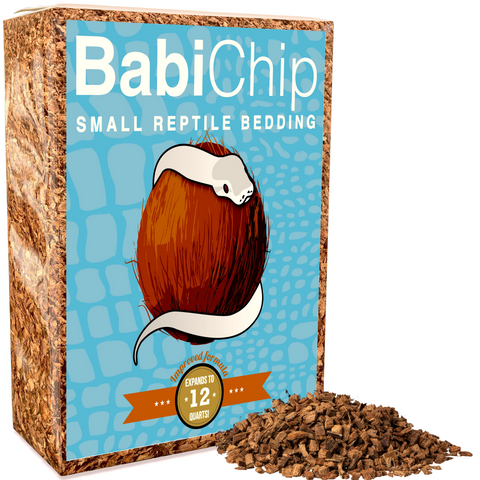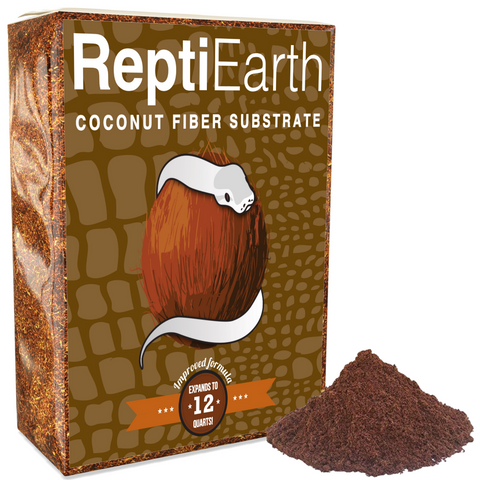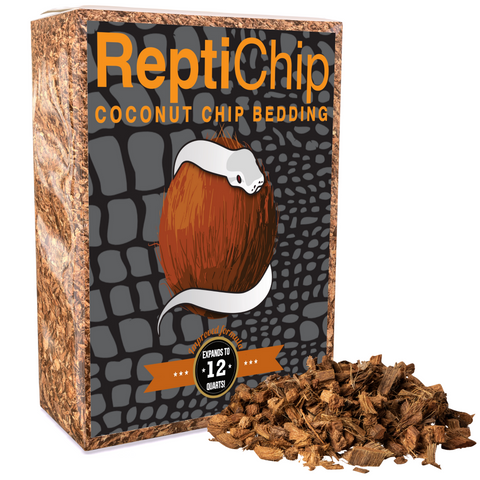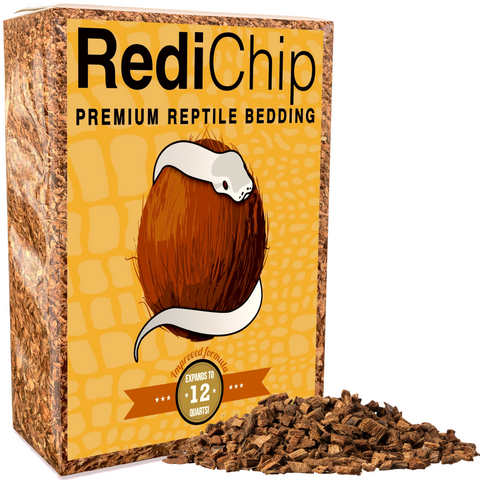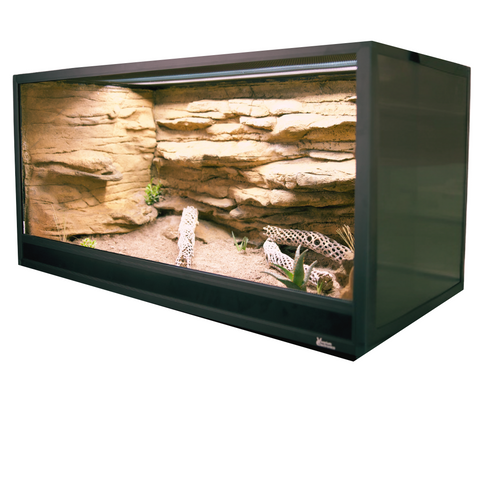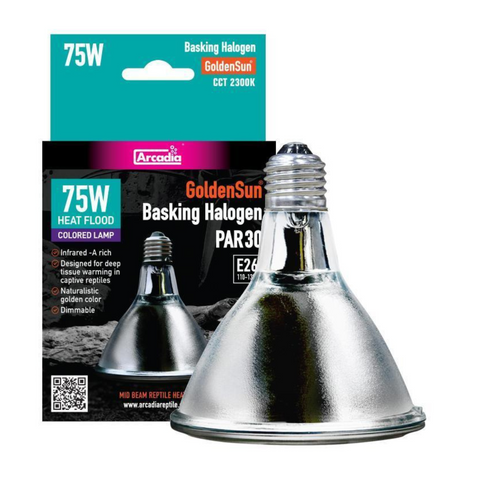Natural History
The tricolor hognose snake undergoes several distinct life stages, beginning as an egg and progressing through juvenile development to adulthood. Females typically lay clutches of 4 to 12 eggs, which are deposited in moist, sheltered locations such as burrows or under decomposing plant material. The incubation period lasts around 50 to 70 days, depending on environmental conditions such as temperature and humidity. Hatchlings emerge at a length of approximately 6 to 8 inches and exhibit the same distinctive red, black, and white banding pattern as adults. Growth during the first year is relatively rapid, with individuals reaching about half their adult size within this time. Maturity is generally reached in 2 to 3 years, with females growing slightly larger than males. In the wild, these snakes have an expected lifespan of around 8 to 12 years, though in captivity, they may live longer when provided with optimal conditions.
Tricolor hognose snakes display a range of fascinating behaviors, many of which revolve around their strategies for hunting, defense, and thermoregulation. They are primarily terrestrial but may occasionally burrow into loose substrate or hide beneath debris to regulate body temperature and avoid predators. Their primary activity pattern is diurnal, meaning they are most active during the day. A defining behavioral trait of this species is its elaborate defensive display. When threatened, a tricolor hognose snake may spread its body laterally, flatten its head, or perform a dramatic “death feigning” act, where it rolls onto its back and remains motionless with its mouth slightly open, mimicking a lifeless state to deter predators. These snakes are generally solitary, except during the breeding season when males actively seek out receptive females for mating.
Within their native grasslands and dry forest habitats, tricolor hognose snakes occupy a crucial ecological role as both predator and prey. By consuming small vertebrates and invertebrates, they help regulate local populations of these creatures, indirectly contributing to the balance of the ecosystem. They are themselves preyed upon by a variety of larger animals, including birds of prey, mammals, and other reptiles. Their cryptic coloration, despite being visually striking to humans, offers some protection through mimicry, as their bold red, black, and white banding resembles that of venomous coral snakes, discouraging predators from attacking. This form of Batesian mimicry is a key survival adaptation in their environment. Additionally, their burrowing behavior aids in soil aeration, which benefits plant growth and overall ecosystem health. By maintaining healthy populations in their native range, tricolor hognose snakes play an important role in sustaining ecological balance, demonstrating the valuable function that even small reptile species serve in their environments.
Conservation Status
The conservation status of this species has been assessed by the International Union for Conservation of Nature (IUCN) and is currently classified as Least Concern. This designation signifies that the species maintains relatively stable population numbers across its range and does not presently face an immediate risk of significant decline. The classification also indicates that the species has a fairly extensive geographic distribution, with populations found in various habitats throughout its native range. While local declines have been observed in some regions due to habitat disturbance and human activities, the species as a whole remains resilient. However, regular monitoring is necessary to ensure that emerging threats do not escalate to the point of necessitating a more urgent conservation status in the future.
Despite its current classification, this species does face several noteworthy threats in the wild. Habitat destruction is one of the primary concerns, particularly due to agricultural expansion, urban development, and deforestation. These activities reduce the availability of suitable environments for the species, leading to fragmentation of populations and increased vulnerability to localized extinctions. In some areas, road mortality poses an additional hazard, as individuals frequently fall victim to vehicle collisions when crossing roads during periods of activity. Climate change may also play a role in altering the species’ habitat suitability by affecting temperature and humidity levels, which can influence their reproductive success and prey availability. Furthermore, although the illegal pet trade does not currently pose a major threat to wild populations, unregulated collection could become a concern if demand increases. Misidentification as a venomous species can also lead to unnecessary persecution by humans, further adding to mortality rates in some regions.
Conservation efforts for this species include legal protections within parts of its range, particularly in areas where its populations might be vulnerable to human activities. Various national and regional laws restrict habitat destruction in protected reserves, ensuring that significant portions of the species’ natural environment remain intact. Additionally, some local conservation organizations focus on habitat preservation and restoration initiatives aimed at maintaining biodiversity within ecosystems this snake inhabits. Although extensive captive breeding programs for this species are not widespread, small-scale breeding efforts within the exotic pet trade provide an alternative source for collectors, reducing the need for wild-caught specimens. Education and public awareness campaigns that promote responsible reptile keeping and correct identification of non-venomous snakes further aid in the species’ continued stability by diminishing unnecessary killings. Continued habitat conservation, legal enforcement against habitat destruction, and long-term population monitoring will be essential in ensuring this snake remains abundant in its natural range for future generations.
Native Range
The species is native to South America, with a distribution primarily spanning parts of Argentina, Paraguay, Bolivia, and southern Brazil. It is most commonly found in the Gran Chaco region, a vast and ecologically diverse plain characterized by a mix of dry forests, scrublands, and savannas. While its range is relatively broad compared to some specialized snake species, it remains restricted to specific ecological niches within this region. The species primarily inhabits areas with loose, well-draining soils and ample ground cover, allowing it to engage in its characteristic burrowing behavior.
The broader ecosystem, or macrohabitat, consists of seasonally dry tropical forests, open grasslands, and shrub-dominated savannas. Within these environments, the species favors microhabitats that provide shelter and stable conditions, such as beneath decaying logs, within leaf litter, or inside abandoned burrows created by small mammals. These hiding spots allow the snake to avoid extreme environmental conditions and potential predators while aiding in thermoregulation. In regions where sandy or loamy substrates dominate, this species exhibits a strong preference for loose, friable soils, which facilitate its natural fossorial tendencies.
Climate plays a significant role in the species' ecology, as it is adapted to areas with pronounced seasonal variations in temperature and precipitation. The native range experiences warm to hot summers, with temperatures often exceeding 85°F, while winter temperatures can drop significantly, sometimes falling below 50°F. In these cooler months, the species may enter a period of reduced activity or brumation, sheltering underground to conserve energy. Rainfall patterns are distinct, with alternating wet and dry seasons. The rainy season, which occurs from late spring to early autumn, increases humidity and promotes greater activity levels, whereas the dry season leads to drier conditions, prompting the snake to rely more on its burrowing behavior to maintain suitable hydration and temperature levels.
This species is typically found at lower elevations, ranging from sea level up to approximately 2,000 feet. Within this range, it demonstrates a preference for areas where soil composition and vegetation structure enable efficient movement and concealment. Access to water, though not a primary necessity for survival, is beneficial in maintaining adequate hydration, particularly during the dry season. Vegetation in its habitat is often composed of drought-resistant shrubs, scattered trees, and tall grasses, providing both shade and opportunities for ambush predation. The presence of small vertebrate prey, including amphibians and lizards, is also a critical environmental factor influencing population densities and distribution.
Overall, the species is highly specialized for a semi-arid to mesic environment with well-defined wet and dry seasons. Its behavioral adaptations, particularly burrowing and seasonal activity shifts, allow it to persist in an environment with fluctuating climatic conditions. Deforestation, agricultural expansion, and habitat fragmentation pose potential threats to its populations in some regions, but it remains resilient due to its cryptic nature and ability to exploit a range of microhabitats. Understanding its natural habitat is essential for replicating appropriate captive conditions that support its physiological and behavioral needs.
Behavior
The tricolor hognose snake exhibits a distinctly activity pattern, with peak activity occurring during the early morning and late evening hours. However, environmental conditions significantly influence its behavior, as individuals may become more nocturnal or diurnal depending on temperature and prey availability. Wild populations adjust their seasonal activity in response to temperature fluctuations, becoming more active in warm, humid months and retreating into a period of brumation during cooler seasons. In captivity, this species may display year-round diurnal activity if maintained within optimal thermal conditions, though some individuals may instinctively reduce activity levels during winter months even without a substantial temperature drop.
This species tends to be solitary in both the wild and captivity, interacting with conspecifics primarily during the breeding season. Males actively seek out females using chemosensory cues, and courtship typically involves persistent tactile stimulation from the male. Unlike some snake species, this reptile exhibits no parental care, as the female deposits eggs in a secure location and leaves them to incubate unattended. Aggression between individuals is infrequent but can arise if multiple snakes are housed together, particularly among males competing for mating opportunities. Due to their solitary nature and potential stress from cohabitation, keeping individuals in separate enclosures is generally recommended to prevent unnecessary social stress and competition.
Environmental factors strongly shape the behavior of this snake. It is highly sensitive to temperature fluctuations, actively basking or burrowing to regulate its body temperature. In response to high heat, it seeks shelter under leaf litter, burrows into loose substrates, or retreats to shaded areas. Light cycles play a crucial role in maintaining normal behavioral rhythms, and disruptions to photoperiods can lead to disorientation or stress. This species demonstrates an acute sensitivity to humidity shifts, displaying increased burrowing activity during dry conditions to retain moisture and seeking more open, humid environments when desiccation becomes a risk. When encountering potential predators, it employs defensive strategies such as flattening its body, hooding its neck, and displaying aposematic coloration to mimic venomous species. If these tactics fail, it may engage in bluff striking or perform thanatosis—playing dead by flipping onto its back with its mouth agape—to deter threats.
One of its most distinctive behavioral traits is its use of specialized mimicry and defensive posturing. Its coloration closely resembles venomous coral snakes, which serves as an effective deterrent against predators. This snake also demonstrates unique foraging behaviors, actively hunting small vertebrates and amphibians using its strong sense of smell rather than relying on visual stimuli. While not an ambush predator like many other colubrids, it occasionally employs digging behaviors to uncover hidden prey. Another notable aspect of its behavior is its method of subduing food—though lacking medically significant venom, it uses rear fangs to help immobilize prey, a trait common among hognose species.
In captivity, certain behaviors shift due to the controlled nature of their environment. Captive individuals often exhibit less exploratory and defensive behavior due to reduced predation risk and consistent food availability. However, some retain their natural bluffing responses when startled or handled, particularly juveniles. Feeding responses can also change in captivity, with some individuals becoming more accustomed to pre-killed prey rather than live capture hunting. Stress behaviors such as excessive burrowing, refusing food, or prolonged defensive displays can indicate suboptimal husbandry conditions, including inappropriate temperatures, excessive handling, or improper enclosure setup. Providing environmental enrichment, such as varied substrate types, hides, and climbing opportunities, helps simulate natural behaviors and prevent stress-related behaviors like excessive hiding or inactivity.
Overall, the tricolor hognose snake’s behavior is complex and highly influenced by environmental conditions. Understanding its natural instincts and responses allows for better husbandry practices, ensuring that captive individuals exhibit healthy, species-appropriate behaviors while minimizing stress-induced changes that can affect their well-being.
Captivity Requirements
Enclosure Design
For housing, juveniles require a minimum enclosure size of 24 inches by 18 inches, ideally in the form of a secure and well-ventilated terrarium or tub. As they grow, adults should be provided with a minimum enclosure of 36 inches by 18 inches by 18 inches, though a larger enclosure is always beneficial for increased environmental enrichment. Glass or high-quality PVC enclosures work well, as they retain heat and humidity while allowing for proper ventilation. Enclosures with sliding or front-opening doors are recommended for ease of access, though they must be equipped with secure latches to prevent escapes, as this species is known to be adept at pushing against loose-fitting lids or doors.
The interior of the enclosure should closely mimic the snake’s natural environment, which consists of semi-arid grasslands and dry scrublands. Multiple hides should be provided, with at least one on the cooler side and another on the warmer side of the enclosure, allowing the snake to thermoregulate while feeling secure. Hides should consist of natural materials such as cork bark, half logs, or clay caves to simulate the burrows typically used in the wild. Additionally, this species benefits from having a deep layer of loose substrate for burrowing, as burrowing is a natural behavior that helps them regulate temperature and avoid stress. For those kept in larger enclosures, adding textured climbing materials such as cork branches or artificial vines can encourage natural exploratory behaviors, though they are not a heavily arboreal species. Because they are occasionally prone to escape, all vent openings should be covered with fine mesh, and doors or lids should be secured with locks or clamps.
Lighting and Heating
Tricolor hognose snakes require a well-established temperature gradient to facilitate proper thermoregulation. The basking area should be maintained between 88°F and 90°F using an overhead heat source such as a ceramic heat emitter or a low-wattage halogen bulb. The ambient temperature across the enclosure should range between 75°F and 82°F, ensuring that the snake can find a comfortable zone within this gradient. At night, temperatures can safely drop to around 70°F without issue, as this species naturally experiences cooler temperatures in the wild. Under-tank heating pads can be used but are not the preferred heat source, as overhead heating better replicates natural conditions.
While tricolor hognose snakes are not highly dependent on UVB like some other diurnal reptiles, providing a low-output 5-7% UVB bulb can offer benefits, including improved digestion, immune function, and natural vitamin D synthesis. The UVB light should be placed over a basking area, spanning approximately one-third of the enclosure, and should be positioned 10–12 inches from the basking surface if using a mesh lid. The photoperiod should follow a cycle of 12 hours of light and 12 hours of darkness, though slight seasonal variations (e.g., increasing light exposure in the summer or decreasing it in the winter) can help replicate natural environmental changes and encourage seasonal behaviors.
Substrate and Enrichment
A loose, naturalistic substrate is highly recommended for this species, as it supports their burrowing behavior while helping to retain appropriate humidity levels. A mix of ReptiChip and ReptiEarth provides an ideal texture that allows for digging. Aspen shavings are another viable option, though they do not retain humidity as well as other substrates. Sand should be avoided or only used in a carefully balanced mixture to reduce the risk of impaction. Spot cleaning should be done regularly, with full substrate changes performed every four to six weeks, depending on waste accumulation.
Environmental enrichment is essential for maintaining the snake’s mental and physical health. Since they are a fossorial species, deep substrate should be provided to encourage natural burrowing habits. Hides made of bark, clay, or synthetic rock materials should be placed in both warm and cool areas, allowing the snake to choose resting spots based on its thermoregulatory needs. For additional stimulation, arranging materials such as flat cork bark pieces or leaf litter on top of the substrate will create areas for exploratory behavior. Though they are not highly active climbers, providing slightly elevated surfaces such as low branches or hollow logs may encourage occasional exploration. Enrichment elements should be rotated periodically to maintain engagement and prevent behavioral stagnation.
Humidity and Hydration
Tricolor hognose snakes require moderate humidity levels ranging between 40% and 60%, though slight fluctuations are acceptable as long as consistent hydration sources are available. If humidity levels drop too low, shedding complications may arise, leading to retained eye caps or incomplete shedding. To maintain stable humidity, a substrate blend with moderate moisture retention should be used, and periodic misting may be necessary in drier environments. However, excess humidity should be avoided, as overly damp conditions may encourage respiratory infections or scale rot.
A shallow water dish large enough for the snake to submerge part of its body should be available at all times and cleaned frequently to prevent bacterial growth. This species may occasionally prefer drinking droplets from misted surfaces rather than directly from a bowl, so light spraying once or twice a week can encourage hydration. During shedding cycles, slightly increasing humidity through misting or by adding damp sphagnum moss inside a designated "shedding hide" can assist in proper ecdysis. Humidity should always be monitored with an accurate digital hygrometer to prevent fluctuations that could negatively impact the snake’s health.
Diet & Supplementation
The diet of this species varies significantly between wild and captive environments due to differences in prey availability and metabolic regulation. In its natural habitat, this snake is a specialized carnivore that primarily consumes amphibians, particularly frogs and toads. It may also opportunistically eat small lizards and occasionally soft-bodied invertebrates such as worms. This dietary preference is largely influenced by its highly adapted feeding behavior and physiological tolerance for toxic amphibians, a trait that allows it to exploit food sources that many other predators avoid. The snake utilizes a combination of chemical and tactile cues to detect prey, relying heavily on its forked tongue and Jacobson’s organ to analyze scent trails. Unlike ambush predators, this species exhibits active foraging behavior, persistently tracking prey along the ground and in shallow water. When capturing prey, it relies on a mild venom delivered through rear-fanged teeth, which helps subdue amphibians by affecting their nervous system or circulatory function. This adaptation enables the snake to handle prey items that produce defensive toxins.
Juveniles and hatchlings often exhibit a more restricted diet, primarily consuming small amphibians and tiny lizards that they can safely overpower. As they mature, their dietary breadth can expand, though they maintain a strong preference for amphibians throughout their lifespan. Seasonal variations in prey availability can influence feeding frequency, with individuals potentially consuming more food during wet seasons when amphibians are abundant and reducing intake during drier conditions when prey becomes less accessible. This natural fluctuation in food intake leads to periods of feast and fasting, a pattern that should be considered in captive husbandry to align feeding schedules with the species’ natural metabolic tendencies.
In captivity, replicating this amphibian-heavy diet presents challenges, as suitable prey may be difficult to source consistently. While some keepers offer live or frozen-thawed amphibians, many rely on alternative prey items such as appropriately sized rodents, reptile-scented food, or commercially available amphibian-based diets. However, this substitution requires careful management, as the high-fat content in rodents differs significantly from the leaner composition of amphibians. Overreliance on rodents can lead to obesity and metabolic imbalances, making dietary variety crucial for long-term health. Supplements such as calcium and vitamin D3 may be necessary to prevent deficiencies, particularly for individuals fed diets lacking whole-prey nutrients. Dusting prey with calcium powder or using gut-loaded feeder amphibians can help compensate for any nutritional gaps.
Feeding challenges in captivity can include food refusal, particularly in individuals that imprint on certain prey items in the wild and struggle to transition to alternative foods. Scenting techniques, such as rubbing a rodent with amphibian skin or using natural amphibian secretions, can encourage better feeding responses. Additionally, maintaining an appropriate feeding schedule is essential—offering food too frequently can result in obesity, while feeding too infrequently may cause malnutrition. Juveniles typically require more frequent meals, with feedings every 5–7 days, while adults may only need a meal every 10–14 days depending on their body condition and activity levels. Enrichment, including simulated hunting experiences such as tong-feeding or hiding prey within naturalistic enclosures, can encourage natural foraging behaviors and prevent stress-related feeding issues.
By carefully managing dietary replication, nutritional balance, and feeding strategies, keepers can ensure that this species thrives in captivity while maintaining natural feeding behaviors and metabolic health.
Reproduction
Reproductive maturity in this species is typically reached around 2 to 3 years for males and approximately 3 to 4 years for females, although individual growth rates may vary depending on diet and environmental conditions. Males tend to mature faster than females but should not be bred until they exhibit consistent feeding behavior and an appropriate body condition. This species demonstrates slight sexual dimorphism, with males generally being more slender and possessing proportionally longer tails due to the presence of hemipenes, while females are typically more robust with shorter, tapering tails.
Courtship behaviors often begin with the male exhibiting increased activity levels in response to the female's pheromonal cues. When introduced to a receptive female, the male will engage in tongue flicking, body rubbing, and gentle nudging along the female’s dorsal surface to stimulate a breeding response. If receptive, the female remains still or engages in slow, deliberate movement, allowing the male to align his body for copulation. Mating pairs may remain engaged for several hours, ensuring successful insemination. It is essential to monitor breeding interactions, as some females may reject advances, displaying avoidance behaviors such as coiling defensively or attempting to flee. Persistent rejection often indicates that the female is not yet in peak reproductive condition or is experiencing environmental stress.
Successful breeding is strongly influenced by environmental cues that mirror seasonal changes in the species' natural habitat. Cooling periods are particularly effective in synchronizing reproductive cycles, with temperatures gradually decreased over four to six weeks to a range of approximately 60–65°F at night while maintaining daytime highs of around 75–80°F. This temperature cycling should be accompanied by a gradual reduction in photoperiod, mimicking shorter daylight hours during winter months. Following this cooling period, temperatures and lighting schedules should return to baseline levels, triggering renewed feeding and stimulating reproductive readiness. Increased humidity levels and slight misting during this transition period may enhance receptivity, as these conditions often correspond with seasonal precipitation patterns in their natural range.
This species is oviparous, meaning females lay eggs rather than give birth to live young. A suitable nesting environment is critical for successful oviposition. A secure, secluded nesting box filled with slightly moistened sphagnum moss or loose substrate such as a mixture of damp ReptiEarth and sand encourages natural nesting behaviors. Females typically seek out humid locations with stable temperatures ranging from 78–82°F to deposit their clutch. If a suitable nesting site is not provided, the female may experience dystocia, or egg retention, which can be life-threatening and may require veterinary intervention.
Breeding strategies should consider social dynamics to minimize stress and maximize reproductive success. Pairings are best conducted by introducing the female into the male’s enclosure or placing both in a neutral breeding environment rather than housing them together long-term. Extended cohabitation can lead to stress and, in some cases, aggression or territorial disputes, particularly among sexually mature males. Rotating females among well-conditioned males can increase breeding success, as some males display preferences for specific partners.
Captive breeding challenges may arise due to incompatibility between individuals, environmental stressors, or improper seasonal cycling. If a pair fails to copulate, reassessing environmental triggers, ensuring both snakes have received adequate cooling cycles, and testing different pairings may improve results. Stress-related reproductive failure can also occur if breeding introductions are mishandled or if either individual is in poor health. Maintaining an optimal diet and providing ample recovery time between breeding attempts ensures long-term reproductive success. Additionally, inexperienced males may require multiple attempts before successfully positioning for copulation. Offering multiple opportunities for introductions and ensuring they occur in a low-stress environment can help mitigate failed breeding encounters.
By carefully managing environmental cues, providing appropriate nesting conditions, and addressing potential breeding complications, successful captive reproduction of this species can be achieved. Regular monitoring of breeding behaviors, careful selection of compatible pairs, and adherence to best practices in husbandry all contribute to a higher likelihood of a successful egg-laying event.
Incubation & Neonate Care
The tricolor hognose snake is an oviparous species, meaning it reproduces by laying eggs. After mating, females typically lay a clutch ranging from 4 to 12 eggs, though clutch size can vary based on the female's age, size, and overall health. Egg-laying typically occurs in a secure, humid burrow or nesting site, where the female deposits her eggs before leaving them to develop independently. Unlike some reptilian species, there is no parental care beyond egg deposition, and incubation conditions must be carefully managed in captivity to ensure successful hatching.
Incubation requires specific environmental parameters to optimize embryonic development and hatch rates. Eggs should be incubated at a temperature range of approximately 78 to 84°F, with an optimal target of 80 to 82°F for balanced development. Excessively high temperatures can lead to developmental abnormalities or reduced hatchling viability, while temperatures below the recommended range may prolong incubation and increase mortality risk. Humidity is equally crucial and should be maintained at 80 to 90 percent, as desiccation can lead to deformities or embryonic failure. The best incubation substrate is a moisture-retaining but well-ventilated medium such as vermiculite or perlite mixed with water at a 1:1 by weight ratio. Regular monitoring is necessary to ensure eggs do not collapse or mold due to improper humidity levels. Eggs should not be rotated, as embryo development may become disrupted.
Hatching typically occurs between 50 and 70 days after egg deposition, depending on the incubation temperature. As the embryos near full development, the neonates use a specialized egg tooth to cut through the eggshell in a process known as pipping. Hatchlings may remain inside their eggs for several hours to days as they absorb the remaining yolk sac, providing them with critical nutrition for their early days of life. It is essential to maintain high humidity during this period to prevent the eggshells from becoming too rigid for hatching. Some hatchlings may struggle to emerge fully, in which case careful intervention—such as gently enlarging the pip hole with sterile tools—may be necessary, though excessive handling should be avoided.
Once fully emerged, neonates should be housed separately or in small, similarly sized groups to prevent aggressive competition for food and reduce stress. A secure enclosure with a simple setup, including a paper towel or aspen bedding substrate, small hiding spots, and a shallow water dish, is ideal. Temperature should be maintained at 76 to 82°F on the cool side, with a basking area reaching 86 to 88°F, and humidity should remain at 50 to 60 percent. Proper ventilation is necessary to avoid respiratory infections caused by excessively damp conditions. Hatchlings should not be handled for the first several days to allow them to acclimate and complete their first shed, which usually occurs within 7 to 10 days of hatching.
Feeding should commence after the first shed, with appropriately sized prey items such as thawed pinky mice offered once every five to seven days. Some neonates may be reluctant feeders due to stress or unfamiliarity with rodent prey, in which case scenting techniques—such as rubbing the prey with reptile-safe fish or amphibian scent—may be required. Careful monitoring of food intake and body condition is essential to ensure proper growth. Hydration should always be maintained with access to clean, fresh water, and enclosures should be spot-cleaned regularly to maintain hygiene and prevent bacterial growth. With proper neonatal care, hatchlings develop steadily and become hardy juveniles within a few months, provided they are given the correct environmental conditions and nutritious diet.
Conclusion
The tricolor hognose snake is a fascinating and uniquely adapted reptile that thrives both in its natural habitat and in well-maintained captive environments. Its biological and behavioral traits, from its distinctive defensive displays to its specialized feeding habits, make it an intriguing species for dedicated reptile keepers. When provided with appropriate housing, a carefully managed diet, and enriched environmental conditions, individuals in captivity can exhibit strong health and longevity, often surpassing the life expectancy of their wild counterparts.
Understanding the ecological role of this species is essential not only for maintaining healthy captive specimens but also for appreciating its significance in the wild. As both predator and prey within its native range, the tricolor hognose snake contributes to the balance of grassland and forest ecosystems, influencing the populations of smaller vertebrates while serving as food for a variety of predators. Its use of Batesian mimicry—imitating venomous coral snakes—highlights the complexity of its evolutionary strategies for survival, demonstrating the intricate relationships between species within its environment.
Captive care of this species requires an approach that mirrors its natural behavioral and physiological adaptations. Providing a well-regulated temperature gradient, access to loose substrates for burrowing, an appropriately varied diet, and minimal but consistent handling helps ensure that individuals remain healthy and stress-free. Enclosures should balance security with environmental stimulation, incorporating hides, textured surfaces, and climbing elements while maintaining proper humidity and ventilation. Enrichment through naturalistic enclosures and controlled variations in seasonal conditions can promote instinctual behaviors and overall well-being.
Reproductive success in captivity is achievable through precise environmental adjustments and careful selection of breeding pairs. Understanding the seasonal fluctuations that govern the species' reproductive cycle is key to encouraging viable egg-laying and successful incubation. By implementing best practices in breeding management—including providing ideal nesting sites, maintaining proper incubation conditions, and carefully monitoring hatchling development—keepers can contribute to sustainable captive populations and ensure the long-term vitality of the species within the herpetocultural community.
As pressures such as habitat loss and climate change continue to impact wildlife worldwide, responsible husbandry and ethical reptile keeping become increasingly important. While the tricolor hognose snake is not currently threatened, conservation awareness and continued monitoring of wild populations remain essential. By supporting legal and ethical breeding practices, educating the public on the importance of non-venomous snake conservation, and discouraging improper collection from the wild, keepers can play a role in ensuring that this species remains abundant in the future.



